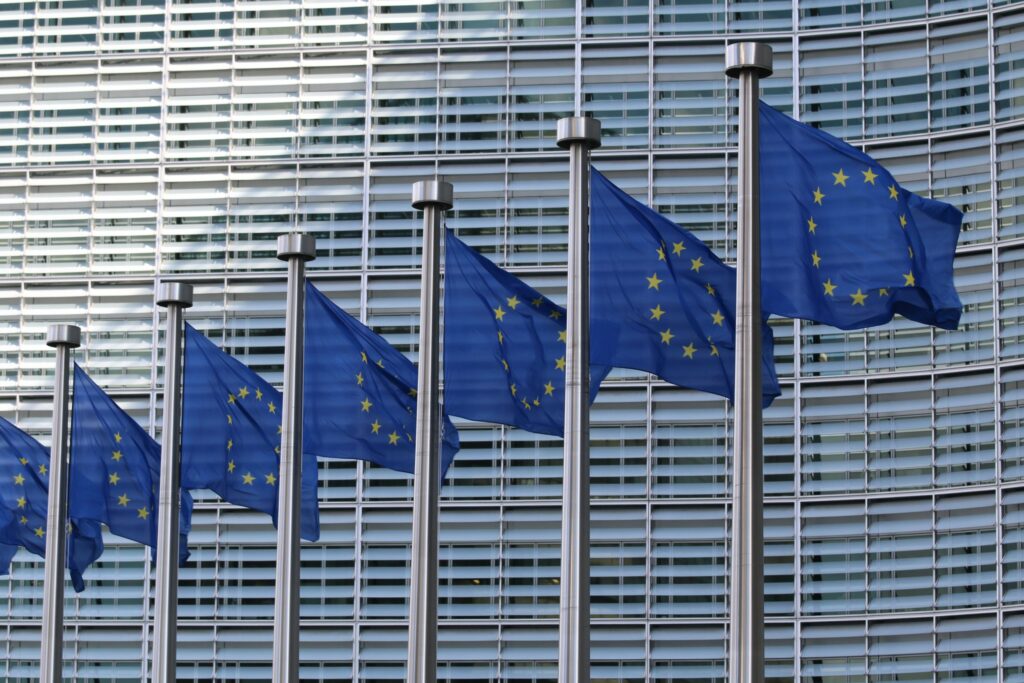

On 6th May, the Telecom Infra Project (TIP) hosted the virtual event “Connectivity Driving Europe’s Recovery.” Moderated by Access Partnership’s Kaisu Karvala, Head of Europe and UK, the event provided a valuable platform for discussion between EU policymakers and industry on the future of telecoms and connectivity in Europe.
The Telecom Infra Project (TIP) is a global community of organizations working together to accelerate the development and deployment of open, disaggregated, and standards-based technology solutions that deliver high-quality connectivity.
Data Flows
Filipe Batista, representing the Portuguese Presidency of the Council of the EU, highlighted that European countries must be prepared for the eventual growth of international data flows and ensure that member states can own a significant part of that data, for personal protection rights and from a security perspective. One of the main objectives of the Digital Decade Declaration is to expand European in data storage and processing markets. Greater international connectivity will boost that exchange and aid the development of European strategic technologies and digital services, as well as promoting European data protection standards internationally. At the same time, policy decisions on industry, competition trade and digitisation should not be based on protectionism.
Digital Recovery and Maturation
Peter Stuckmann, Head of Unit, Future Connectivity Systems at European Commission & Deputy Director, Future Networks, highlighted the importance of “new strategies that take into account unprecedented situations such as this pandemic”; for instance, using public investment to stimulate recovery. Strategies such as the Digital Decade promote increased participation in the digital society by strengthening digital citizenship systems, solidifying infrastructures through connectivity, cloud and microelectronics chips, and identifying dependency and resilience. The 5G Action Plan presents a 2032 target where gigabit access and high-quality 5G service should be available everywhere. During this period, it is expected that 6G will also be launched across the region. Europe will need ambitious 5G deployments to develop lead markets, while the launch of research and innovation on 6G to maintain and extend technology capacities in Europe will also be pivotal.
Progress in the TIP Community
Turning to industry, Juan Carlos Garcia, SVP Technology Innovation and Ecosystem, Telefonica Group, noted the initial challenge of transitioning from business architecture based on monolithic systems to more modular solutions, as well as the challenges it could create for telecom operators from both a technical and operational perspective. The telecom industry is observing the evolution and maturation of TIP, noting that the valuable portfolio of open disaggregated components allows telecom operators to synchronise on input open solutions for certain scenarios. Telefonica is interested in the application of these open architectures to fully private networks, while open design and prototypes becoming active elements in production networks could present a great business opportunity for telecom operators.
Conclusions
The COVID-19 pandemic has demonstrated the vital importance of connectivity and has exposed several limitations. Connectivity has the potential to reshape our lives, but the European infrastructure that underpins it needs to be fit for purpose.
Key Takeaways
- There has been a quick response to the impact of Covid-19 in terms of connectivity policy, with little momentum lost. For instance, the Portuguese Presidency led the signing of several declarations among member states on digital connectivity issues and underlined the importance of i) adopting strategic approaches towards international connectivity; ii) safeguarding Europe from a security and geopolitical perspective; and iii) improving the resilience of internal digital networks.
- The Commission and Presidency noted the need for ambitious 5G deployments in lead markets, as well as the launch of research and innovation on 6G to maintain and extend technology capacities in Europe.
- Virtualisation and disaggregation could open greater market environments and enable more choice.
- Different types of networks are required in order to reap the benefits; not only closed networks, but open networks that application developers can develop and enjoy the benefits of (reliability, low latency). This will allow for the creation of time precision networks and applications developed around those.